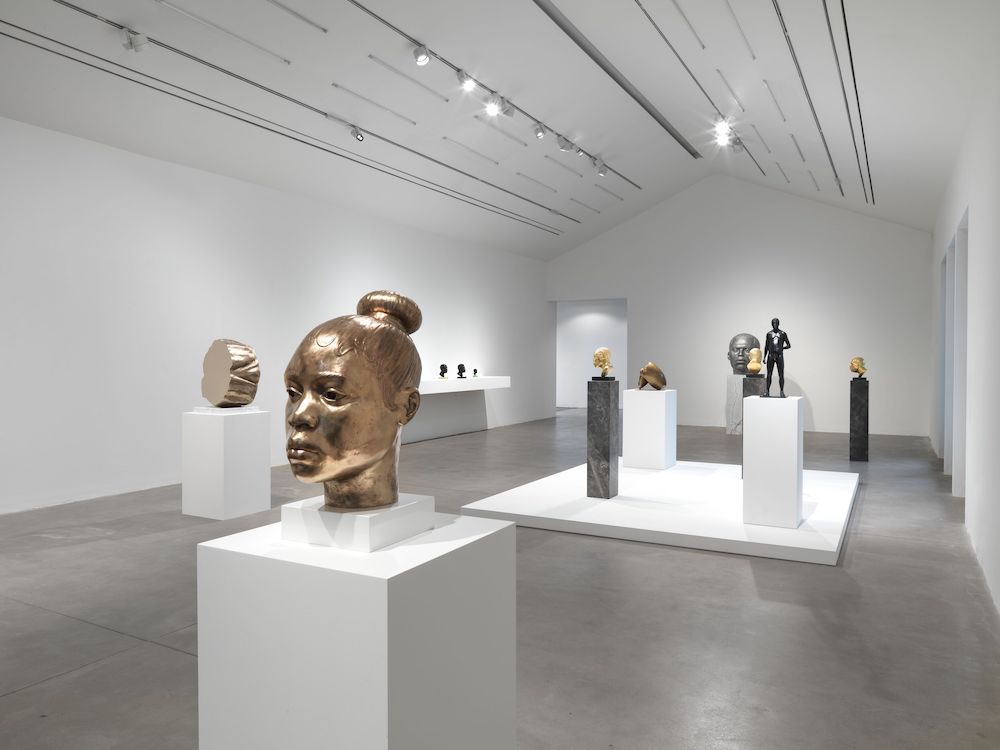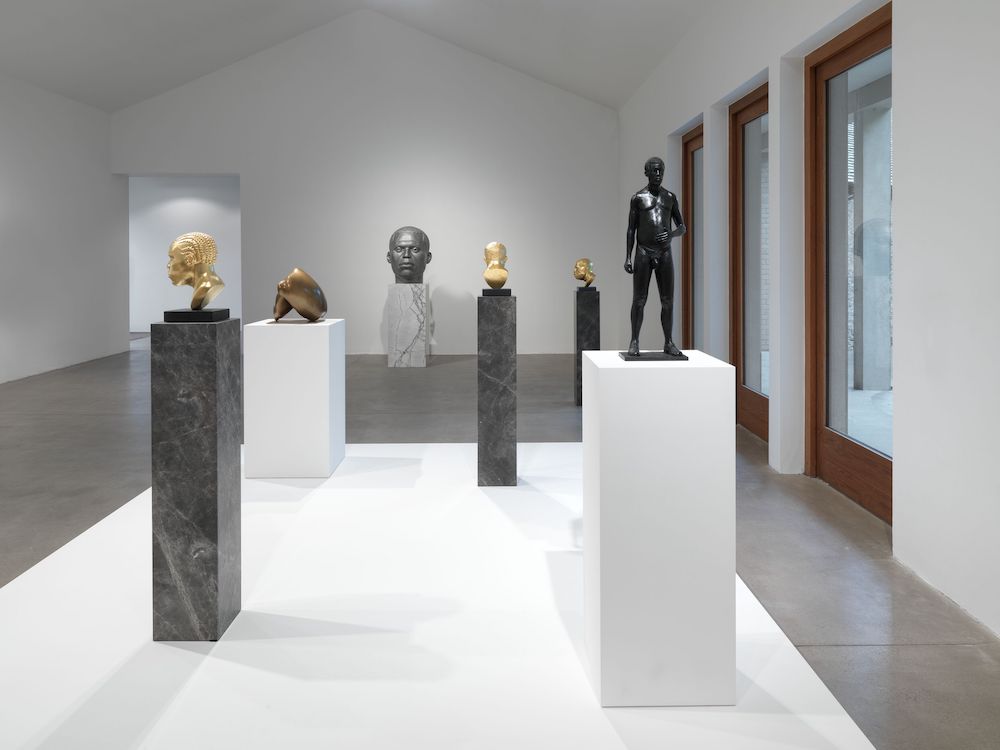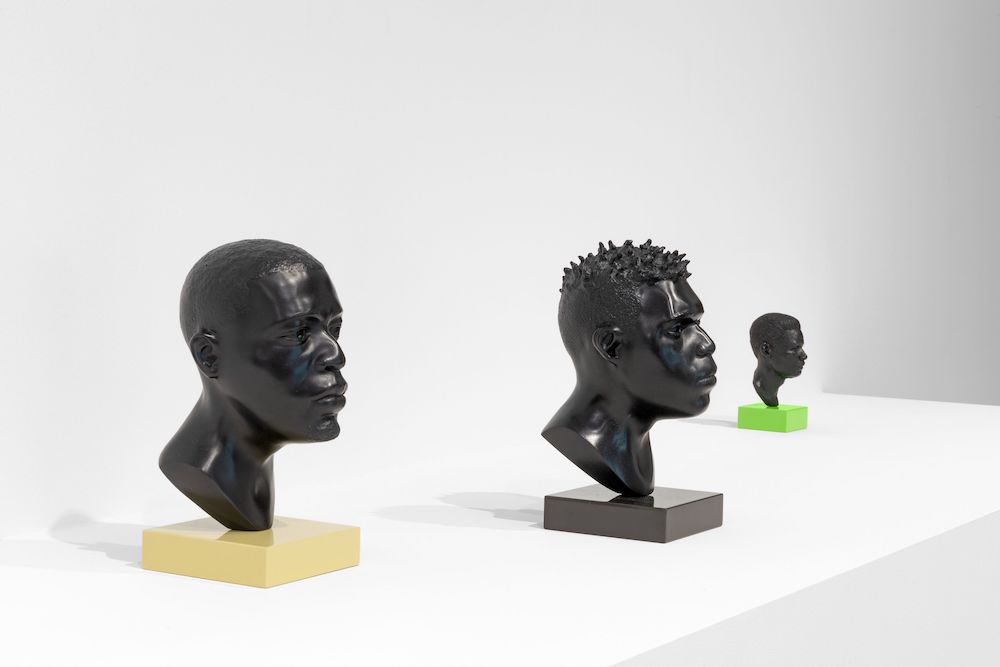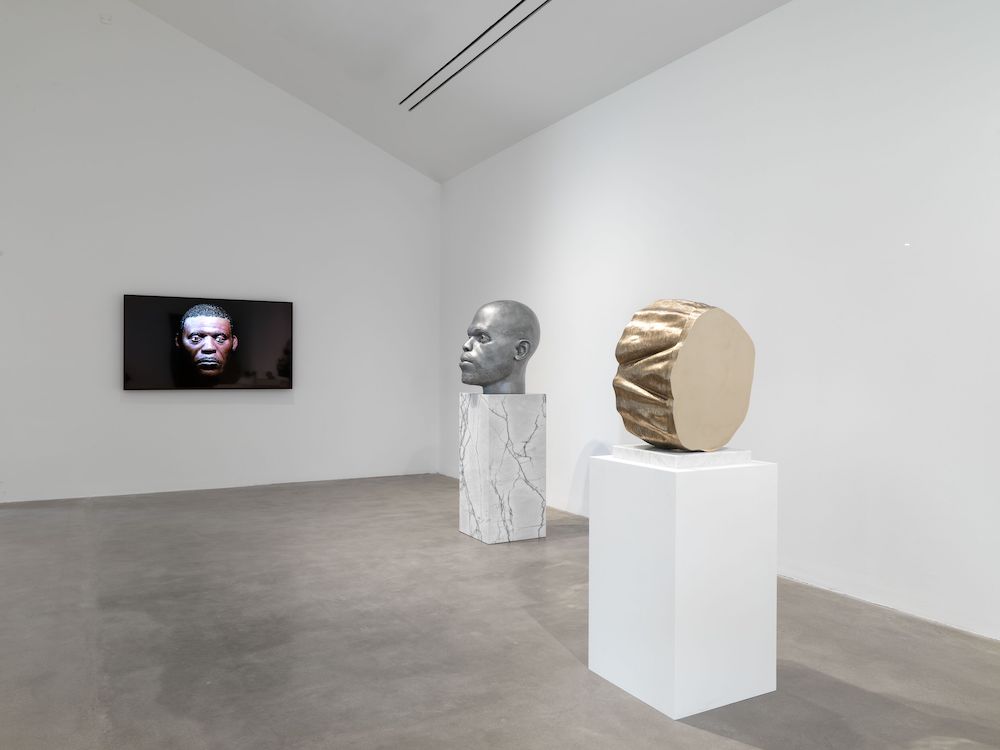British artist Thomas J Price on representation, thrashing the art history rule book, and his current exhibition at Hauser & Wirth
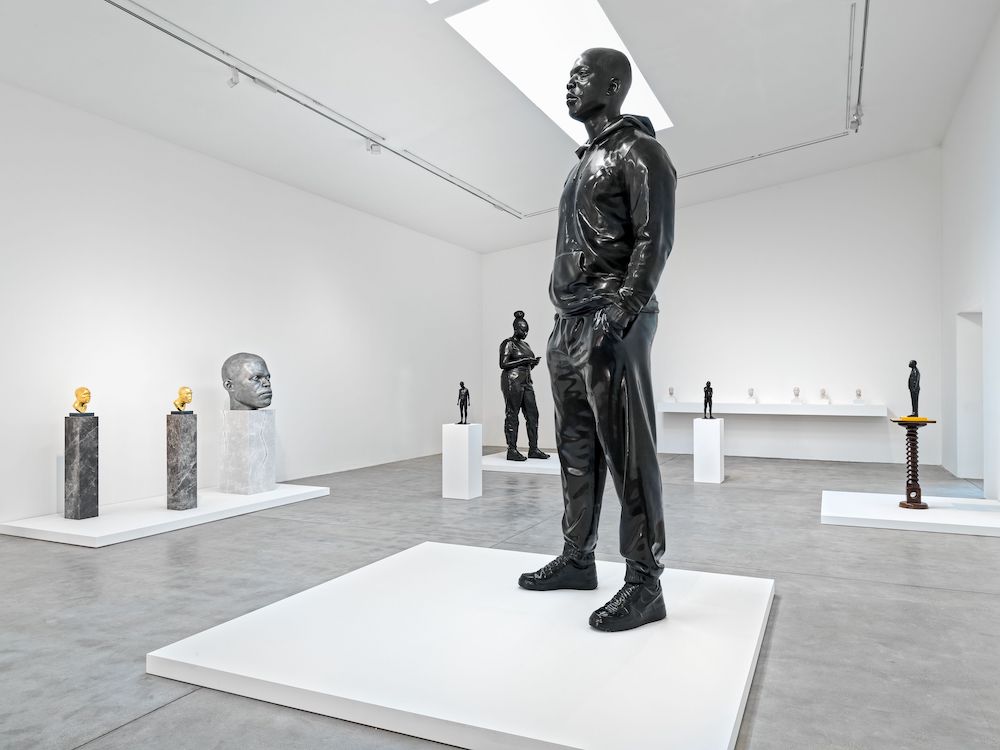
Thomas J Price is a dissector of tradition. The British artist and RCA grad is known for his large-scale sculptures, bronze heads and art works of anonymous characters – that of which have always remained nameless and range from minuscule to 12-foot in height. Through multidisciplinary and context-riddled pieces – aided by a background in video, performance and stop motion animation – Thomas strives and succeeds in examining the role of art and how, across society in general, we assign people (and values) towards specific objects. Why are certain people not seen in art, and why does society accept this? An artist of 20 years now, Thomas poses these questions and, in the present day, he’s seen some drastic shifts in the mainstream attitude of his viewers – and the art landscape in general. Not only is the perception of art changing, but Thomas has now landed a momentous show at Somerset’s Hauser & Wirth entitled Thoughts Unseen, and has been commissioned by Hackney Council Commission to create the first permanent public sculpture in celebration of the Windrush generation, set to be unveiled next year. Below, I chat to Thomas about representation in art, thrashing the history rule book and his latest accomplishments – that of which includes a sculpture about bus drivers and a 12-foot bronze man standing casually in a hoody.
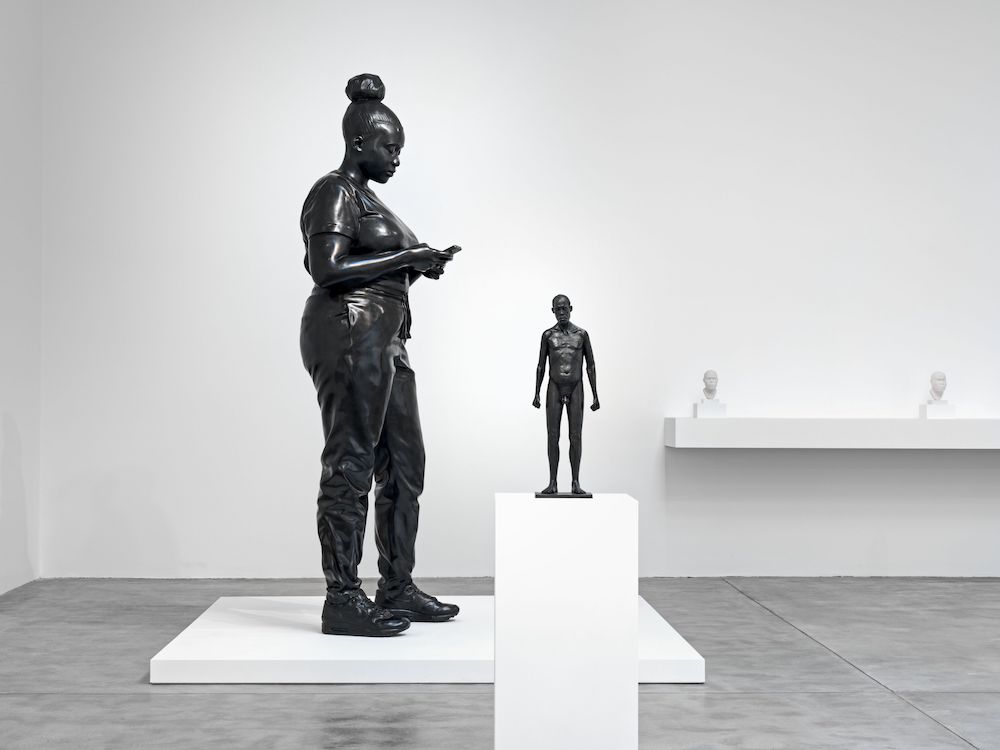
Your work seeks to challenge historical narratives, can you tell me a bit more about this?
The sculptures were initially began experiments in physiognomy; experimenting with different types of faces, characters and people, and responses that they would get from me. Then I’d imagine what responses I’d get from the viewers. This was all in order to make the characters in stop motion. Then, after a tutorial at the Royal College, I was challenged as to why I wouldn’t show all these different little sculptures – so I ended up making a small plaster head. It was through that process that I started to look at all the existing elements of portraiture around me.
The very fact that my works are of fictional characters is because I want to critique this whole notion of portraiture, the whole value system of portraiture, and how we attribute value to individuals, and who gets to decide who is valuable. And so, in that sense, when you start to reference and tap into our history, and the history of portraits, the history of statues – those figurative sculptures are sculptures which critique statues, they’re not statues themselves. But when you start to reference those points, it gets political very quickly.
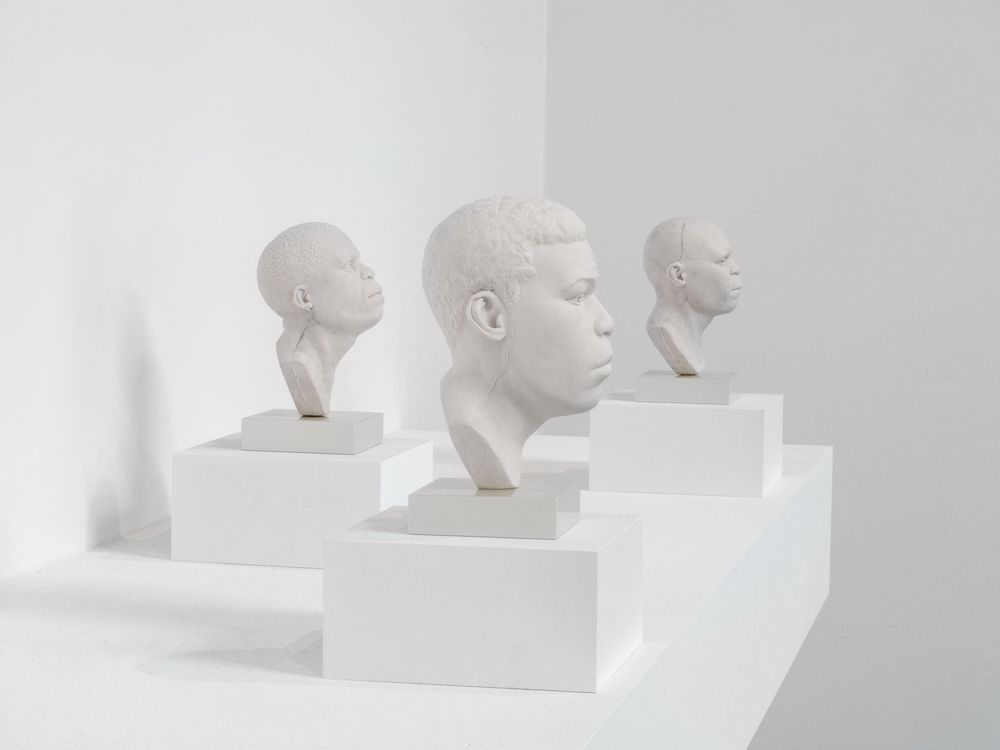
When I was at school, I didn’t see many people like myself, if at all. I had particular messages or expectations around me, which contrasted hugely to what I was expecting from myself, or what I thought about myself. A lot of my work is about placing the internal understandings I have about me as a human being, as the people I know as human beings, against the kind of continuous and very loud expectations and limitations from within society. When it comes to the large sculptures, they talk about the language of power and the language of monuments. Specifically as we’re talking about real individuals in history who have been placed in public spaces to tell society who was valuable, what great deeds have been done and who we should look up to – literally and figuratively. When I look at the kind of the imagined characters in my practice, is pitting that against our expectations of what should be preserved, what should be valuable, what should be revered, and celebrated and saying, well, what about this, and if not, why not? It’s about making the viewer bring their understandings to the works so they reveal themselves through the process of assigning identity and reason. In that sense, I think they’re actually more like portraits of the viewer. Because these are made up people, they don’t exist. There’s no title or identity: man one, man two, man three; head one, head two, head three. It’s about really packing it with information, and just giving it a little push, figuratively speaking, to hopefully meet the viewer partway.
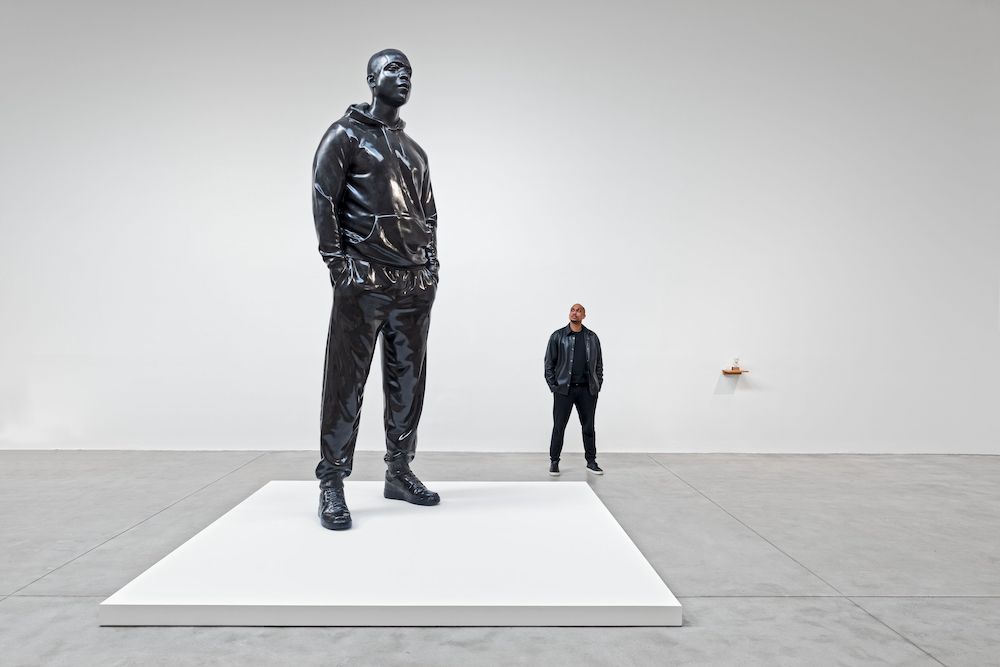
I find the concept of anonymity very interesting. How do you build your subjects, are they based off people that you’ve seen in fleeting moments? Are they a mash up of things, or more from your imagination?
It’s a whole mix of everything you mentioned. It started very much from an emotional position, creating the physiognomies or the look of a character that, for me, embodied the ambiguity – the complexities of a human being in a moment of internal thought, in a moment of total absorption, without self consciousness, without the very real world and very real requirement to perform for a wider public to say that you’re not dangerous, or to say that you’re happy or that you are to conform to the expectations that society places on individuals. That’s why they never look at the viewer, they never try to get our attention, they look beyond us, or they’re in their own world. And for me, that’s a very important statement about autonomy and power, and intrinsic value. So they complete themselves, they don’t need the viewer in order to be of value.
The characters themselves, it really starts with a goal of trying to create something believable. It’s a very intuitive process, where I will use different references – they might be initiated by someone I have seen momentarily, it might be the way that someone stands or how they might have interacted with another person. It’s my response to that and the context.
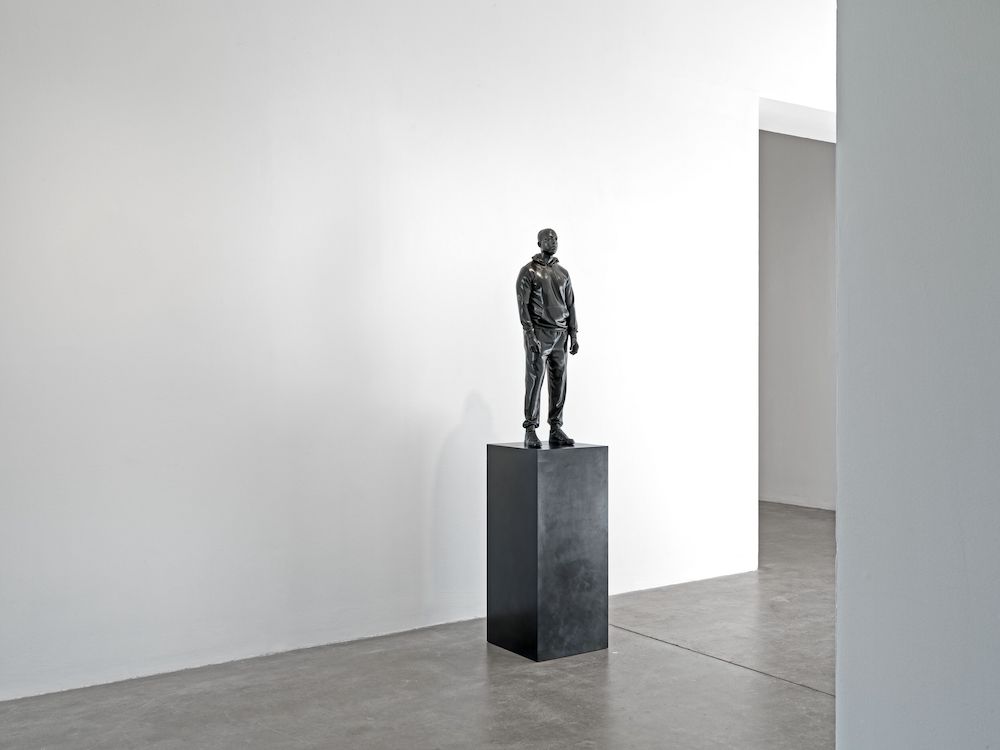
These days, people are more critical of statues in society – the Edward Colston statue Bristol, as a recent example. People are now more aware of the meaning behind them, whereas before, perhaps it wasn’t so much in mainstream awareness.
You’ve nailed it there with mainstream awareness, because people have been campaigning against the Colston statue for decades, at least, and various different statues in Oxford – across the globe. It seems that the perfect storm has happened, and people have had long enough from lockdowns, perhaps, to think about the implications of those statements that were existing. As our attitudes change towards one another, and we start to try and consider more fully the experience of the ‘other’, how can we tolerate these monuments to people who were totally against that? And then try and justify by saying it’s a different time? The objects exist in this time, and they are statements to what we want to move towards or maintain within society. It’s incredible that it’s taken so long, and it’s a really amazing time that we’re living in – some people are trying to claim that history is being hidden or removed, and I personally think that history is being made. We are making history by engaging with the reality of what’s gone before, and trying to engage and constructing something that we want to create ahead of us. It’s exciting times.
So how are your new works a reflection of this?
The show at Hauser and Wirth, titled Thoughts Unseen, looks at the things that we don’t see within each other’s psyches, and how that is manifested externally. One of the first sculptures I chose is called Mixed Feelings, which is about bus drivers – that’s being shown alongside one of the newest pieces, which is also one of the largest figures called All In, and it’s a 12-foot bronze figure of a man standing casually, in a hoody – like me – with his hands in his pockets. They’re both very similar, it’s the same character; it’s also a very similar pose to another piece called Within the Folds, where his hands are outside of his pockets, demonstrating the huge difference that putting your hands in your pockets can make to the understanding of that person. And also the huge change you can make to their experience within the world. You know, a Black man with his hands in his pockets in the public space, for example; it’s not necessarily the most clean-cut thing and a lot of people take it for granted.
The show is a re-contextualisation of about 20 years of my work, which is quite strange to think about. But it’s really exciting because it’s really strengthening those connections between the pieces.
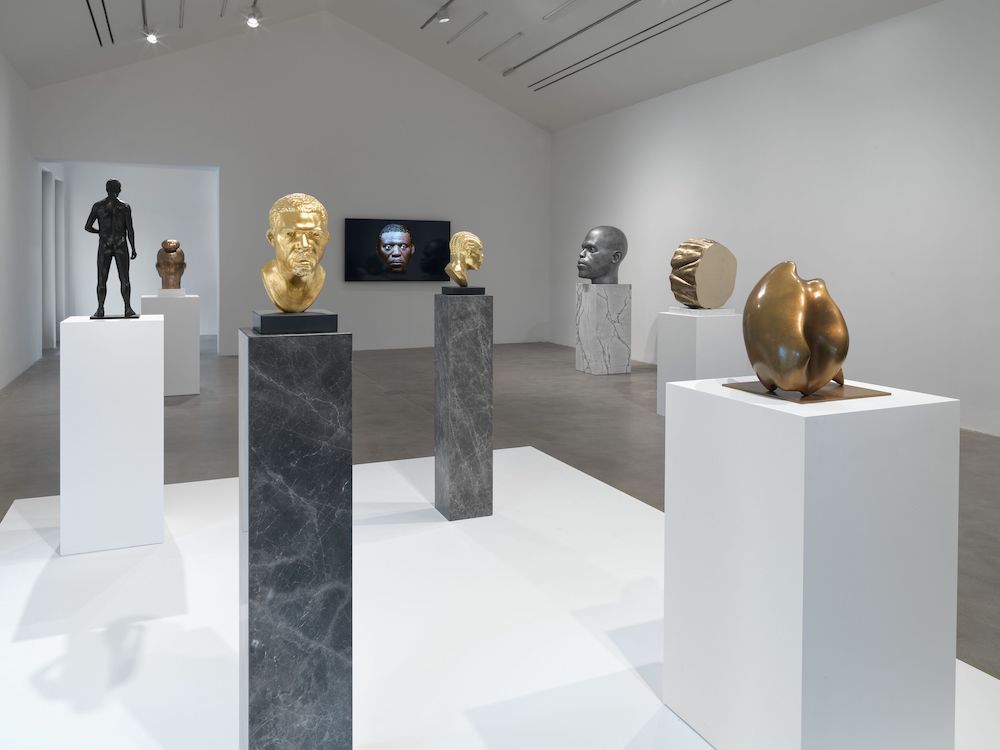
Do you have any main goals in mind when you’re making something?
The goals always change, but it’s really about making people conscious of the guiding forces in their lives; their attitudes and where are they come from; to be conscious and aware of the failings they have; where they come from; to be become aware of the people around them, and their connection to those people. It’s about how we relate to one another and why do we do that. It’s a tricky question because there’s so many varied ambitions and hopes for the works, but I guess I do want to make work that connects to people on some level, whether that’s them taking ownership, how they start to speak to people, how they listen to people, or how we come together around objects to create understandings.
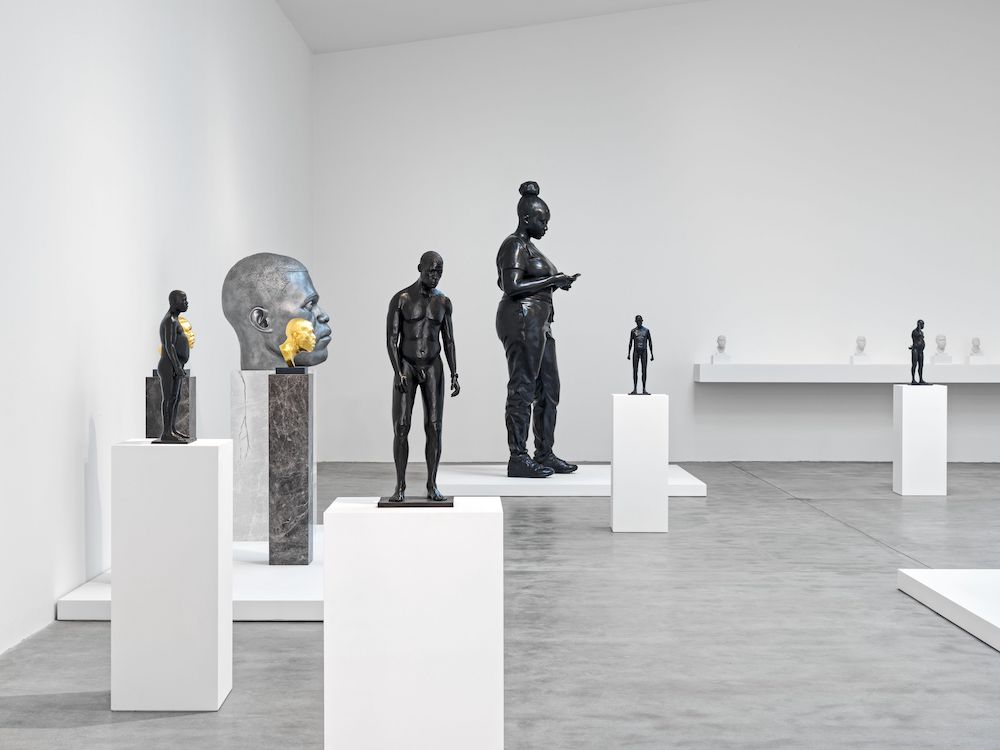
Are you hopeful and optimistic about the future of representation in art, do you think it’s heading in a good direction?
There is a wider awareness of even the term representation. It’s the fact that people are starting to accept that it should be a thing, there should be representation. I think that is a positive step. I think the work I’m seeing produced by different artists is very positive, because it’s not just about representing the body, it’s not just about representing the figurative Black experience, for example; I suppose it’s about allowing the freedom to do what you want to do. And whether that’s abstract painting, performative or it’s about allowing the individual to be present in where they feel they belong. I think that’s starting to happen more and more.
But, there’s a hell of a long way to go, and I think making sure that we stick to it, and keep allowing people opportunities to speak their truth and the fullness of their truths, is going to be a challenge. As one society, we have to stay fully engaged in the change that is happening. I think we all benefit from it. How do we not benefit from having a better understanding of the world around us? I do feel positive, and I think I always have done. That’s why I’ve continued to make the work that I’ve made. I was making these works 20 years ago, when people weren’t talking about this so much. There were people before me making works in these environments and societal contexts, and I don’t know how they continued to make the work they’re making, but they did. And so I think, we all owe it to the people who’ve come before us to continue to speak our truths as fully as we can.
